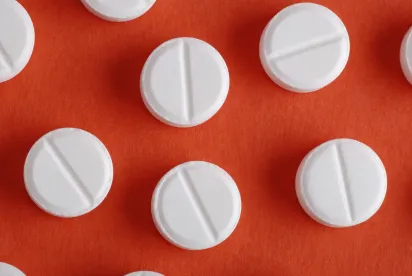In 2008, the Federal Circuit determined that claims 1-4 and 11-17 of U.S. Patent No. 5,760,068 were invalid for obviousness-type double patenting (OTDP) over a related parent patent, in part because the ‘068 patent was filed as a continuation-in-part (CIP) application, not a divisional application. Now, in G.D. Searle LLC v. Lupin Pharmaceuticals Inc., the Federal Circuit has held that RE44,048, which was a reissue of the ‘068 patent, also is invalid for OTDP. Since the patent expired June 2, 2015, that likely is the final blow to a patent that was listed in the Orange Book for Celebrex.
The Patent At Issue
The patent at issue was Pfizer’s RE44,048, which was a reissue of U.S. Patent No. 5,760,068. The reissue was pursued to correct the “error” in the ‘068 patent of filing it as a CIP instead of a divisional application. To correct this error, Pfizer amended the specification and claims to conform to the original disclosure (without the matter added in the CIP) and designated the application as a “divisional” of the original application in which a restriction requirement had been issued. The USPTO examiner rejected that basis for reissue, but Pfizer was able to identify (and correct) other errors correctable by reissue, and eventually secured the grant of RE ‘048.
On the day RE ‘048 was granted, Pfizer filed an infringement suit against five generic drug manufacturers. The defendants moved for summary judgment, challenging the basis of the reissue patent. The district court found that the asserted error of prosecuting the application as a CIP rather than a divisional application “was not correctable by reissue under [35 U.S.C. §] 251,” and that “the safe harbor provision of 35 U.S.C. § 121 did not apply.”
The Double Patenting Safe Harbor
The Federal Circuit opinion was authored by Judge Bryson and joined by Chief Judge Prost and Judge Hughes. Although the appeal presented two issues, the court side-stepped the reissue question and focused on the double patenting safe harbor of § 121:
A patent issuing on an application with respect to which a requirement for restriction under this section has been made, or on an application filed as a result of such a requirement, shall not be used as a reference either in the Patent and Trademark Office or in the courts against a divisional application or against the original application or any patent issued on either of them, if the divisional application is filed before the issuance of the patent on the other application.
The court noted that “a strict test” is applied to determine whether § 121 applies, and found that it did not apply here because the underlying ‘068 patent was a CIP, not a divisional.
The ’113 application cannot be a divisional of the ’594 application, despite being designated as such in the reissue patent, because it contains new matter that was not present in the ’594 application. …. Simply deleting that new matter from the reissue patent does not retroactively alter the nature of the ’113 application.
The court also noted that since the ’068 patent was granted in 1998, Pfizer had enjoyed patent protection on the additional matter, such that “[f]or years thereafter, the public was not free to practice that new matter.”
Fairness to the public does not permit Pfizer to convert the ’113 application into a division of the original ’594 application, and thereby take advantage of the safe harbor provision, simply by designating it as a divisional application years after the fact.
Another complicating factor for this case is that the ‘068 patent stemmed from a U.S. national phase application of a PCT application. The PCT application also was identified as a CIP, and cannot be amended to “cancel” the new matter.
Because the RE ’048 patent identifies itself as descended from the ’113 application and the PCT ’720 application, and because neither of those applications is a division of the original ’594 application, the section 121 safe harbor does not apply to the RE ’048 patent.
The Federal Circuit also found the safe harbor “inapplicable … for a second reason as well: The RE ’048 patent (the challenged patent) and the ’165 patent (the reference patent) are not ‘derived from the same restriction requirement.'” According to the court:
When separate restriction requirements are imposed on separate applications and the record does not show that any of the various restriction requirements carried forward from one application to the next, the earlier restriction requirement cannot be viewed as having continued in effect with respect to the later-filed application.
Here. although both the original restriction requirement and the restriction requirement issued in the ‘068 patent divided the claims amoung compounds, compositions, and methods of use, because the ‘068 patent claims encomassed added subject matter, the court found that the restriction requirement were not the same. The court also noted that there was no indication the the examiner of the ‘068 patent referred to or carried forward the original restriction requirement. Thus, the court found another reason the safe harbor does not apply.
The Narrow Passage To Safe Harbor
While the facts of this case are more complicated than many, this decision underscores the limited scope of protection offered by § 121, and the various ways in which an application can be excluded from the safe harbor.




 />i
/>i
